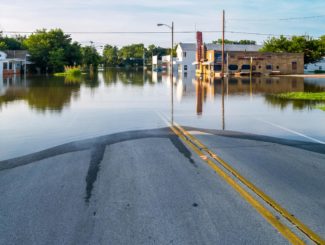By Chhavi Dhingra, Sr Public Engagement Manager and Ryan Earp, Director of Public Engagement, WSB
April 15, 2024
State statute and federal Lead and Copper Rule Revisions require public water systems across Minnesota to identify the materials of all service connections in their distribution systems.
The mandate is clear: cities must identify and replace lead or galvanized steel water service lines to comply with state and federal regulations. Thanks to substantial funding from both state and federal sources, including the recent $240 million appropriation by the 2023 Minnesota Legislature and approx. $40 million a year in federal funds from the Infrastructure Investment and Jobs Act, the financial resources are available to facilitate this essential task. The success of these initiatives now hinges on the capacities of cities to swiftly and effectively communicate, engage and collaborate with their residents to identify, and then eventually, replace water pipes in residences that are made of lead or contain lead parts. Cities find themselves in a race against time, with a Minnesota Department of Health (MDH) mandated deadline looming to inventory all water system lines by fall 2024. The challenge requires a strategic approach to target and then engage communities effectively.
As cities navigate the complexities of lead service line replacement, they do not have to do it alone. WSB, under its master contract with the MDH, is aiding cities to inventory properties and their water service line materials, perform engagement, communications, and public outreach services to cities for engaging with their residents, and creating and implement plans for pipeline replacement.
Based on our understanding and decades of experience of engaging with communities in Minnesota, we propose a four-part blueprint that cities could embrace to effectively engage with their residents on Lead Service Line Inventory and Replacement:
- Meet residents where they are: While a fair share of resident homes and their water service line materials are being identified using a combination of historical documents and savvy GIS methods, there are still a large number of ‘unknowns’ i.e. properties where the service lines material are not known to be lead, galvanized requiring replacement, or a non-lead service line, and where there is no documented evidence to indicate the material classification. Traditional methods of communication such as postcards, door hangers, mailers and utility inserts remain indispensable tools for reaching out to such residents. Additionally, leveraging digital platforms, like plain-language and user-friendly websites which carry information and instructions for residents to self-inspect and report their service line material will help accelerate the outreach.
- Offer spaces and support to help residents address their questions, fears and concerns: Open houses (virtual or in-person) play a vital role in fostering dialogue between residents and city officials. Creating such intentional opportunities for residents to voice their concerns, seek clarification, and actively participate in the process will help build trust and transparency in the city’s efforts. Personalized at-home visits and assistance in identifying service line materials, where residents are not able/willing to conduct the material test themselves, could boost resident participation and drive results.
- Be heedful to the health equity lens: Cities must make extra efforts to connect with vulnerable populations, such as low-income communities and households with young children who could be at risk of being disproportionately affected by lead exposure. Ensuring that they are not overlooked or marginalized in the communication and replacement efforts, adopt data-driven outreach strategies and culturally sensitive messaging to help bridge the gap and address the unique needs of these populations.
- Prioritize accessibility and inclusion: Ensuring that language barriers do not hinder access to vital information, providing interpretation and translation services wherever necessary, developing ADA compliant materials and events, could help residents meaningfully engage in the short -term inventory and long-term replacement processes.
In conclusion, the task of replacing lead service lines is not just a technical endeavor—it is a community effort. By prioritizing timely, effective, and inclusive communication, WSB is helping cities mobilize its residents, building trust, and ensuring a community wide effort to create sustainable water infrastructure that provides safe drinking water for all Americans.
Contact us for more information on our communication and engagement service offers for Lead Service Line Inventory.
Chhavi is a transportation engineer and public engagement professional with almost 20 years of experience developing sustainable policy, practices, and communication strategies, and leading stakeholder management for transportation and transit projects. She has supported several road transportation planning projects globally while overseeing engagement, multi-stakeholder partnerships and strategic communications focusing on addressing mobility and accessibility needs of disadvantaged communities.
[email protected] | 917.328.3588

Ryan has worked with a variety of private and public sector clients to develop impactful strategic communications plans and execute stakeholder and community engagement initiatives. Ryan is passionate about integrating emerging tools and technologies to meet stakeholder outreach objectives for our WSB clients.
[email protected] | 320.224.6879


